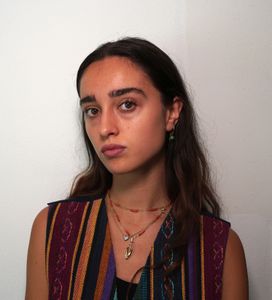Agorà 2025 A review between past, present, and future
Author Steven Stergar
When, in 2022, as part of the collaboration between the Premio “Sergio Amidei” and the “Poklon viziji/Omaggio a una visione” festival, the co-curators of the newly established Agorà section announced its first edition to the public, they did so with the goal of engaging with and contributing to the event “Nova Gorica/Gorizia European Capital of Culture 2025” by identifying and comparing possible recurring themes between contemporary Italian and Slovenian cinema. Now that this goal has been reached, it’s time for a brief reflection. In that inaugural 2022 edition, filmmakers Nika Autor and Francesca Mazzoleni explored a theme close to both: the relationship between human beings and the landscape, and its reinterpretation through the language of documentary cinema. In the second edition, in 2023, Hleb Papou and Erik Valenčič discussed the theme of self-determination shared by the protagonists of their films, dismantling a series of cultural and social prejudices that still widely persist. The third edition, in 2024, featured Ester Ivakič and Paolo Strippoli – filmmakers experimenting with the often-neglected genre cinema – reflecting on the possible consequences of the relationship between the individual and society.
This fourth edition of Agorà, however, differs in part from the previous ones. For the important occasion of 2025, it features works that vary significantly in intent, technique, language, and themes. This deliberate choice stems from the curators’ desire to highlight different perspectives on the reality and the world we inhabit. With this in mind, they decided to double the number of viewpoints, ideas, and discussions – inviting not just two, but four filmmakers from Slovenia and Italy. A further distinguishing feature of this edition is the explicit connection between the filmmakers and the border territory they share. Ana Čigon, Cabiria Lizzi, Neli Maraž, and Ajad Noor all hail from this region and express its lived experience through their visual storytelling. Four local filmmakers, four short films that speak to an international audience. Catlands (2024) by Ana Čigon is an animated allegory that portrays the lives of a neighborhood inhabited by cats from opposing social classes. The central theme of borders – and their grotesque and political implications – is addressed through a distinctive balance of imagination and the expressive potential of animation, paired with the gravity of the subject matter. Cabiria Lizzi takes a contrasting formal approach. Her In dolce attesa, a work-in-progress we’ve chosen to present due to its promising potential, tackles a gradually emerging social prejudice in the world of work. It tells the story of two female entrepreneurs in the male-dominated funeral services industry in Italy. Neli Maraž follows a similar documentary path. Her Domov k spominu (2016, Back to (Me)mories) is a tribute to the emotional significance and meaning of images. It’s told through the shared experience of two elderly sisters, connected by the memory of a past only partially preserved in old family photographs. Their reunion becomes both the narrative trigger and the perfect moment to recall, through speech and drawing, fading images of their childhood. On the opposite end of the spectrum is Ajad Noor. In Il Mirmecologo (2024), a farcical horror theater piece, his interest in the conventions of genre cinema forms the basis of a Kafkaesque tale in which human hypocrisy is examined under the same magnifying glass that reveals the true nature of seemingly harmless creatures like ants.
In short, four films that are markedly different in both language and content, yet together they encapsulate what has been explored in recent years – offered as a fitting conclusion to a cycle we hope will pave the way for new paths, continuing to bring contemporary cinema from both countries closer together.







